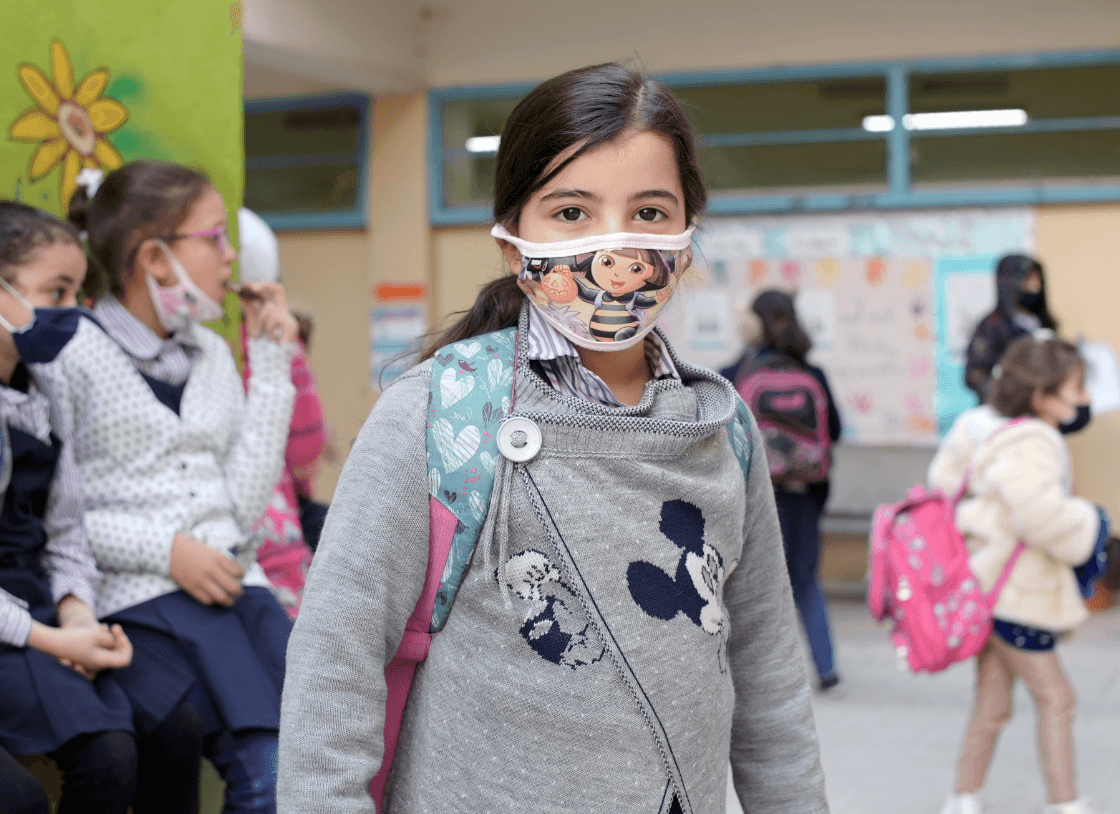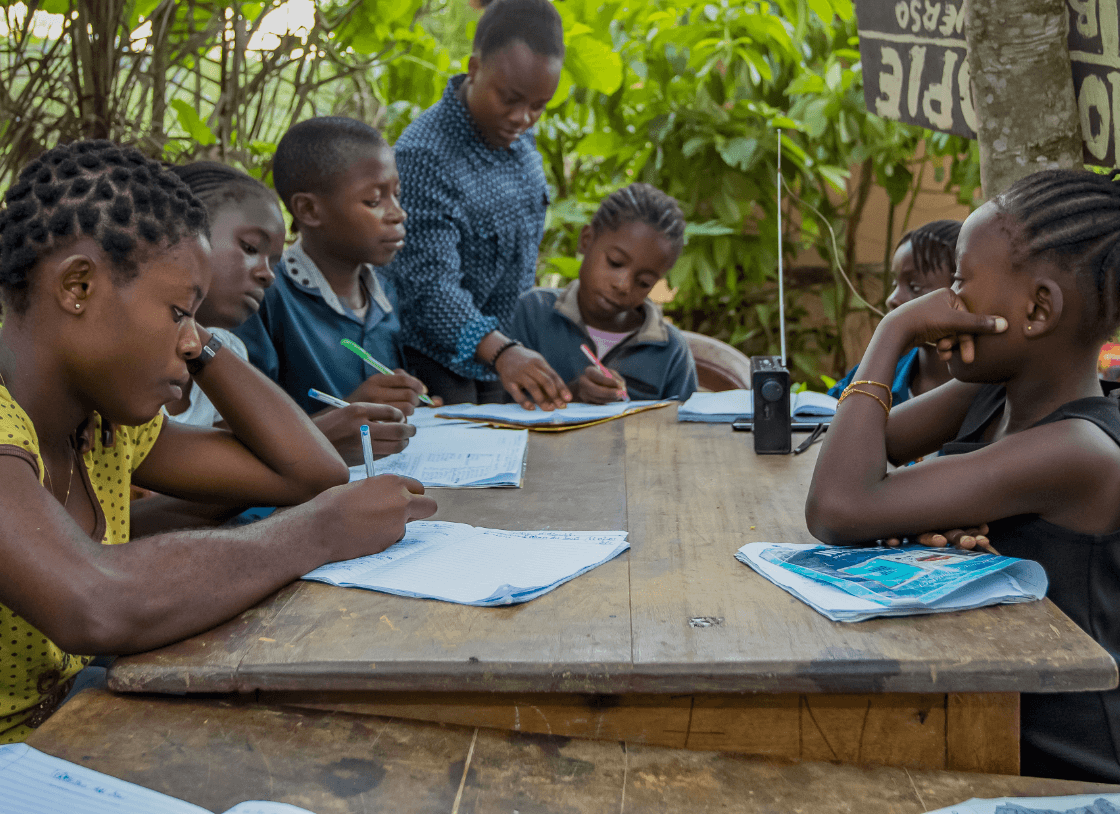© UNICEF/Marish
Results for Children
ECW outcomes focus on access, equity and gender equality, continuity, quality learning, and safe and protective learning environments.

Increased access to education

Strengthened equity and gender equality

Increased continuity and sustainability of education

Improved learning and skills

Safe and protective learning environment
© UNICEF/Fazel

Collective Education Outcome 1
Increased access to education
Ensuring that crisis-affected children are provided with continuous quality learning is an essential priority area for ECW.
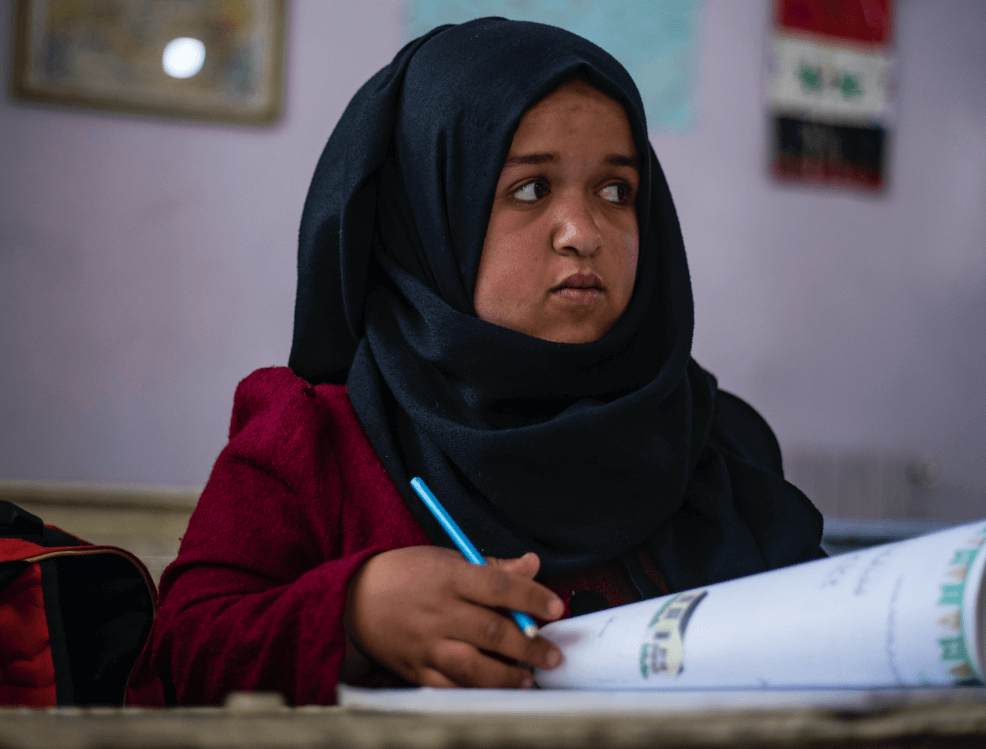
© UNICEF/ Delil Souleiman
Human story
Making Kawthar's Dream a Reality in Syria
Read More →
Human story
Making Kawthar's Dream a Reality in Syria
Read More →
Increased Access
97% of ECW-supported programmes increased access to education for crisis-affected children and adolescents.
Teachers Supported
In 2020, ECW financially supported more than 12,000 teachers and education personnel (39% female).
Cash Transfers to Households
In 2020, ECW-supported grantees provided cash transfer programmes to 8,260 households.
Progress Highlights
Number of teachers/administrators recruited and/or financially supported since inception
Number of classrooms (including temporary learning spaces) built or rehabilitated since inception
Number of children/youth (aged 3–18) reached with non-formal education programmes since inception

COVID-19 Data
9.5 million
(51% Girls)
Number of households in ECW-supported communities receiving cash transfers for education since inception
© UNICEF/Dejongh

Collective Education Outcome 2
Strengthened equity and gender equality
Equity and gender equality in emergencies and protracted crises are at the forefront of ECW’s mandate. To fulfil its commitments on gender, ECW set an ambitious 2020 target of reaching 60% of girls in all its investments.
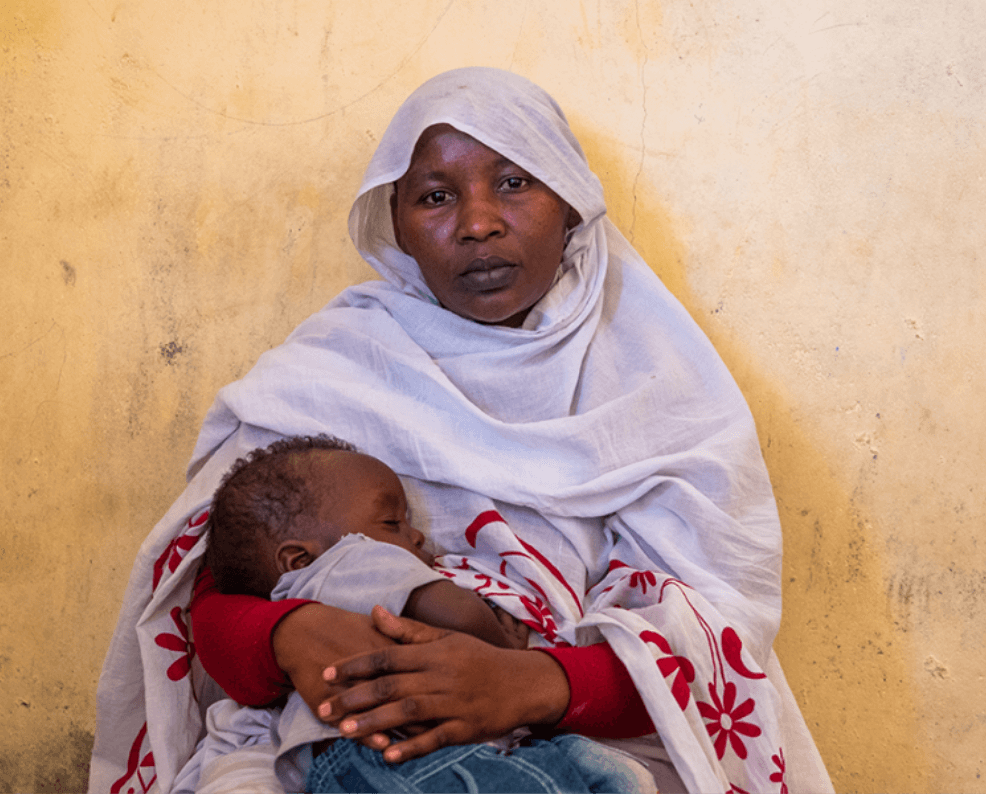
© Jesuit Refugee Service
Human story
Young Mothers Continue Their Education in Chad
Read More →
Human story
Young Mothers Continue Their Education in Chad
Read More →
Continuous Support
2.2 million girls have received continuous education support since ECW’s inception, and 1.27 million girls received support through grants active in 2020.
Reaching Children with Disabilities
The percentage of children with disabilities reached grew from 0.2% since inception to 1.3% in 2020 across ECWs programme portfolio (MYRP 2.3%; FER 1.2%).
Gender and Inclusion Training
Some 14,110 teachers (42% female) have been trained in topics related to gender and inclusion since ECW’s inception.
MYRPs Addressing Gender Inequality
In 2020, 80% of ECW-developed MYRPs addressed social norms, attitudes and behaviours that underlie gender inequality.
Progress Highlights
Percentage of ECW-supported programmes (having data) showing improvement vs. gender parity in access to education in targeted communities
Percentage and number of girls out of total children and youth reached by ECW since inception

COVID-19 Data
51% girls
(14.8 million)

48% girls
(2.2 million)
Percentage of females among teachers/administrators recruited/financially supported since inception
*Percentage largely impacted by an Initial Investment (II) grant in Yemen that supported many more male teachers than female teachers. This project ended in 2019.

28%*
women
(41,386)
Number of children and youth with disabilities reached with ECW support (since the Fund’s inception)
© UNICEF/Dejongh

Collective Education Outcome 3
Increased continuity and sustainability of education
Ensuring children stay in school until they complete their education is a key priority for ECW and our partners.
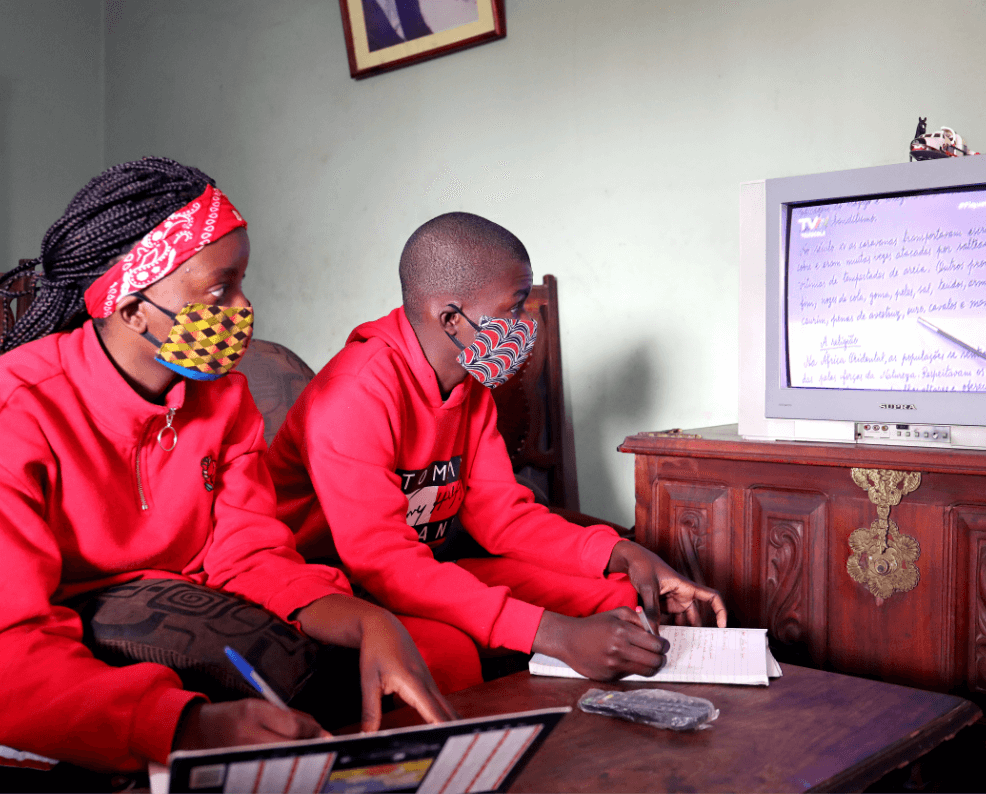
© UNICEF/Fauvrelle
Human story
Television Education in Mozambique
Read More →
Human story
Television Education in Mozambique
Read More →
Increase in Pre-primary Education Interventions
By the end of 2020, ECW had cumulatively reached some 275,000 children (51% girls) with early-childhood or pre-primary education interventions since its inception – 6% of the Fund’s total reach. ECW’s active grants in 2020 reached 144,779 children (50% girls), a decisive increase compared to the 108,330 (52% girls) reached in 2019.
Increase in Early Childhood Education Investment
ECW’s investment in early childhood education increased from 8.7% of total cumulative investment at the end of 2019 ($19.6 million) to 11.5% at the end of 2020 ($59.5 million, including a $12.5 million contribution from the LEGO Foundation), thus tripling ECW’s investment in early childhood education in the span of one year.
Youth Reached with Secondary Education
The share of children reached with secondary education out of all children and adolescents reached with ECW support increased from 9% in 2019 to 13% in 2020.
Progress Highlights
Percentage of ECW-supported programmes with increased survival, transition or completion of crisis-affected children and youth since inception

100%
Number of children (aged 3–8 years) reached with early childhood education services since inception

COVID-19 Data
3.5 million
(44% girls)

275,049
(51% girls)
Number of children (aged 3–18) who received quality school feeding since inception
© UNICEF/Al-Basha

Collective Education Outcome 4
Improved learning and skills
Education quality is the ultimate objective within the ECW results framework, ensuring that the education provided is of the highest standard to support quality learning outcomes.
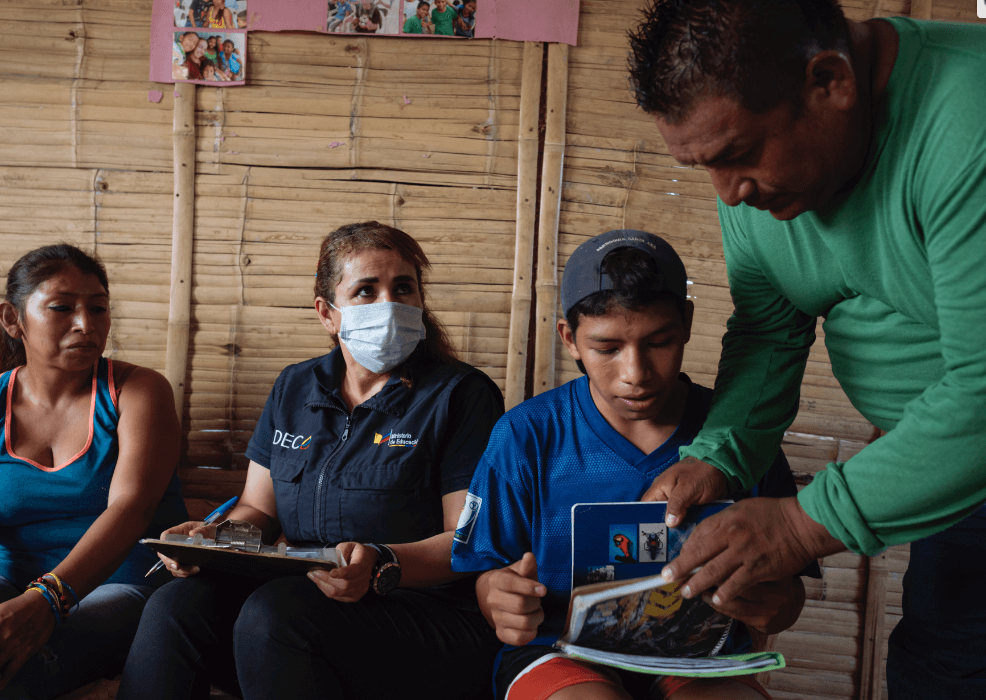
© UNICEF/Arcos
Human story
Keeping 15-year-old Jair in school in Ecuador
Read More →
Human story
Keeping 15-year-old Jair in school in Ecuador
Read More →
Promising Levels of Learning
Learning outcome measurement expanded to 22 grants out of 119, showing both promising changes in levels of learning and large gaps in current academic learning levels.
Teacher Training
Since ECW’s inception nearly 69,000 teachers (48% female) have been trained through regular non-COVID-19 programming, including 42,381 teachers (48% female) trained in 2020.
COVID-Related Training
Approximately 310,600 teachers (55% female) were trained on COVID-19-related topics such as health and hygiene protection, COVID-19 protocols, social and emotional support, and facilitation of distance-learning models through radio, messaging, and online group chats.
Teaching and Learning Materials
During pandemic-related school closures, close to 1.6 million children (45% girls) were reached with teaching and learning materials in support of their continued education. An additional 1.8 million children (47% girls) were reached with COVID-19-related materials to continue their education and to stay safe.
Progress Highlights
Number of children (aged 3–18) reached with individual learning materials since inception

COVID-19 Data
1.8 million
(47% girls)
Number of teachers/administrators trained since inception

COVID-19 Data
310,568
(55% female)
Number of classrooms supported with materials to enhance the learning environment since inception

COVID-19 Data
13,889
28,477
© UNICEF/Owoicho

Collective Education Outcome 5
Safe and protective learning environment
ECW and its partners are working to ensure schools and learning spaces offer a safe, protective, and healing environment to crisis-affected children.
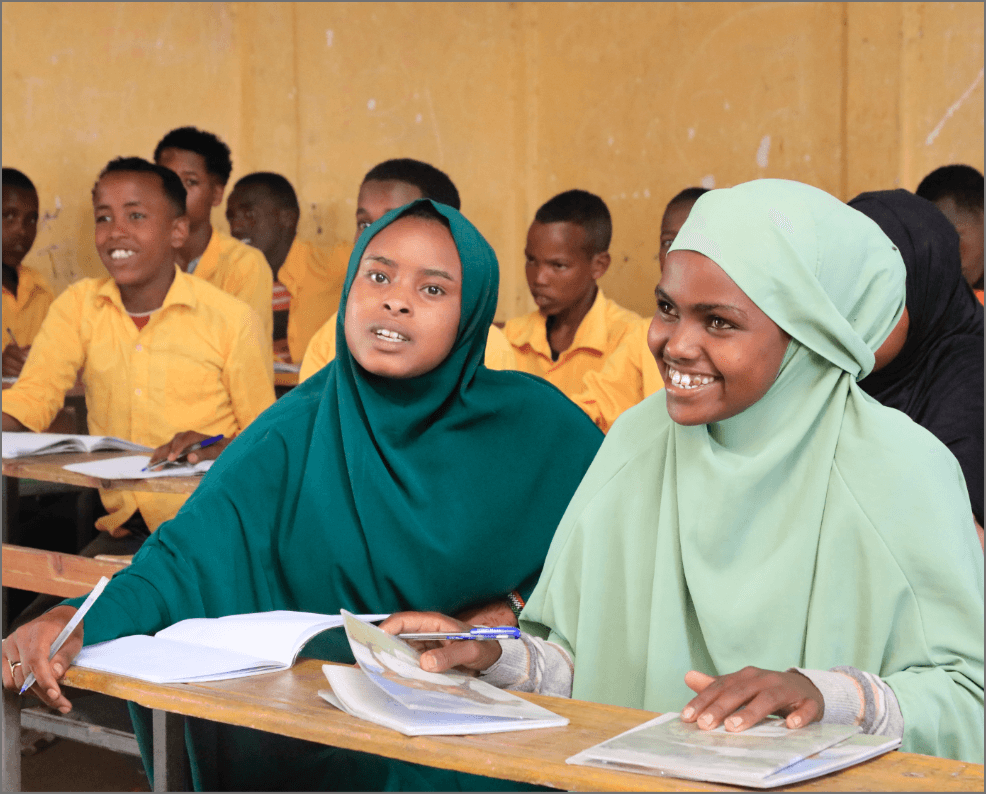
© UNICEF/Arcos
Human story
Asma's Story in Ethiopia
Read More →
Human story
Asma's Story in Ethiopia
Read More →
Increased Access to Wash
In 2020, ECW’s partners increased access to safe and clean water, hygiene and sanitation in 2,225 learning spaces – including through gender-segregated latrines and basic handwashing facilities, as well as teacher training on health and hygiene awareness – thus contributing to reducing the number of school drop-outs and promoting the well-being of children.
Ensuring Safe Transportation
Students, particularly girls, are exposed to many risks on their way to and from school. In 2020, ECW-supported grantees provided some 3,100 children with safe transportation to and from school.
Disaster Risk Reduction Plans
To prevent and/or mitigate the impact of future hazards or attacks, ECW’s partners collaborated with ministries of education to design and implement disaster risk reduction (DRR) plans and provide DRR equipment to schools in the Central African Republic, Malawi, Somalia, State of Palestine and Syria, among other countries. Emergency preparedness, DRR and risk management trainings was provided to about 17,500 teachers and administrators in 2020.
Mental Health and Psychosocial Support
Mental health and psychosocial support is a core component of ECW-supported interventions, particularly in times of school closure when children are more exposed to physical and psychological violence. In 2020, remote mental health and psychosocial support interventions for children, teachers and caregivers were undertaken and more than 19,500 teachers (54% female) were trained by ECW-supported grantees.
Progress Highlights
Percentage of ECW-supported programmes implementing safety and protection interventions that report improved level of safety and protection since inception

63%
Number of teachers/administrators trained on the importance of WASH (without COVID training)
Number of ECW-supported learning spaces where a code of conduct exists, is enforced and teachers and communities are trained/informed on its application

2,600
Number of learning spaces supported by ECW featuring Mental Health and Psychosocial Support (MHPSS) activities for children

2,786

